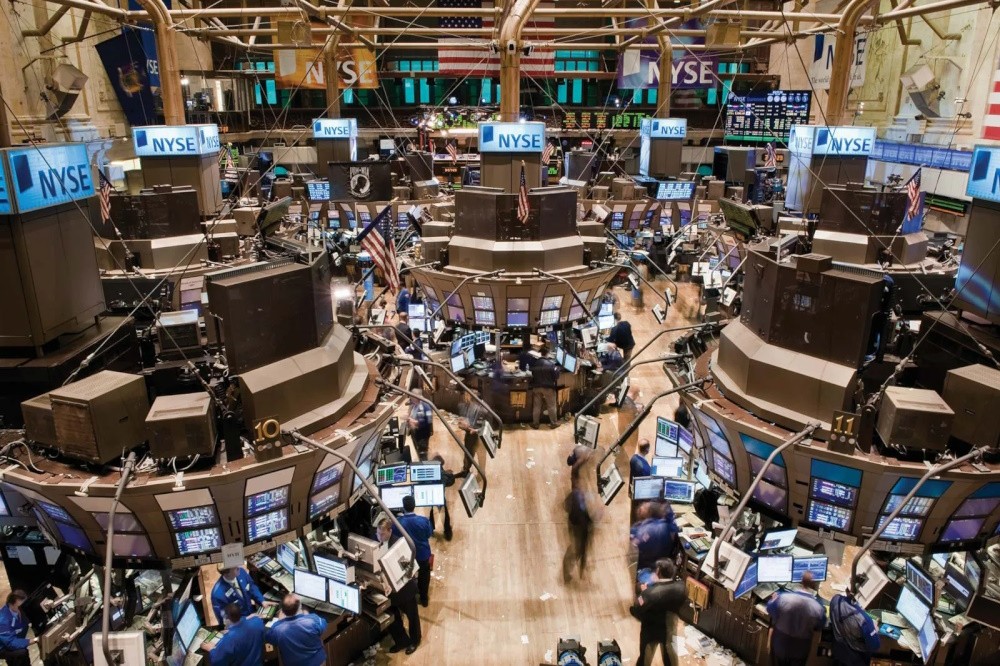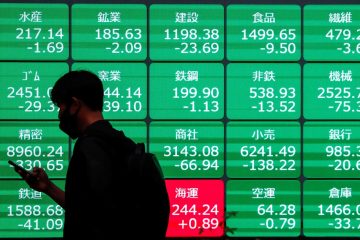Can stocks sustain significant gains for a third year in a row?

Wall Street is contending with the feasibility of sustaining another year of substantial gains in a stock market that appears increasingly overvalued. The S&P 500 has experienced a remarkable increase of 28% in 2024, positioning itself for consecutive annual gains exceeding 20% for the first time since the four-year period concluding in 1998. Analysts at several of the country’s largest financial institutions are forecasting more subdued returns for 2025. JPMorgan Chase, Morgan Stanley, and Goldman Sachs anticipate that the S&P 500 will attain a level of 6500 by the conclusion of the forthcoming year, reflecting a 6.7% rise from Friday’s closing figure of approximately 6090.
Some exhibit a more optimistic outlook. Barclays has recently adjusted its price target upward to 6600. Bank of America and Deutsche Bank project the benchmark index to reach 6666 and 7000, respectively. Analysts largely concur that the pro-growth policies of President-elect Donald Trump are poised to benefit the stock market, yet there remains skepticism regarding the extent of their potential ascent. Concerns are mounting that elevated interest rates, geopolitical instability, and the specter of trade conflicts may undermine the market’s recent advancements, according to some analysts. Nevertheless, a considerable number of investors remain reluctant to declare the conclusion of a rally that has consistently surpassed forecasts.
“We are currently experiencing a period of optimism regarding the new administration,” remarked Matt Miskin, co-chief investment strategist for John Hancock Investment Management. “However, the Federal Reserve will bear the responsibility for the reacceleration of the economy, which is currently performing relatively well, and may be facing somewhat stronger inflation.” In the days ahead, investors will scrutinize the latest inflation data to determine if price pressures are showing signs of abating. The forthcoming report will serve as a crucial indicator of economic conditions ahead of the Federal Reserve’s December meeting, during which a further reduction in interest rates is anticipated. The jobs report released on Friday indicated that the labor market continues to exhibit resilience.
One rationale for optimism as we approach the coming year? An increasing number of stocks are participating in the rally. Market participants are increasingly favoring economically sensitive stocks that underperformed relative to the broader market in the first half of the year. The Russell 2000 index, concentrated on small-cap stocks, is approaching its first record close in three years, with November gains nearly twice those of the S&P 500. Since the conclusion of October, over 220 stocks within the benchmark index have reached a 52-week high. According to data from S&P Dow Jones Indices as of Wednesday, the total return of the S&P 500 this year could only be offset by eliminating the gains of the top 171 stocks, which prominently feature Nvidia and Apple.
Traders often interpret a broad-based rally as indicative of sustainability, as the market demonstrates resilience against potential declines when only a handful of sectors falter. “The broadening comes as no surprise,” remarked Hal Reynolds, co-chief investment officer at Los Angeles Capital Management. “One might argue that the sole astonishment lies in the protracted duration before this eventuality transpired.”
The substantial gains in the stock market during the first half can be attributed largely to the so-called Magnificent Seven—Alphabet, Amazon.com, Apple, Meta Platforms, Microsoft, Nvidia, and Tesla—whose valuations have surged amid the prevailing enthusiasm for artificial intelligence. Last week, stocks regarded as safe havens due to their robust balance sheets regained prominence in the market as investors navigated the political turmoil unfolding in France and South Korea. Positive earnings reports from Salesforce, Okta, and Marvell Technology have contributed to an uptick in technology stocks.
In the long run, the outlook for the stock rally appears considerably more pessimistic than the projections for the coming year. Goldman anticipates a modest annual increase of 3% for the S&P 500 over the coming decade, whereas Bank of America projects stagnant growth, ranging from flat t o 1% per year. A significant concern casting a shadow over the decade ahead is the unpredictability surrounding the sustainability of the AI boom. Certain strategists caution that the anticipated transformative impact of AI may not align with the exuberance reflected in the market’s rally, potentially resulting in significant losses in the future.
Some investors suggest that a potentially stronger dollar during the Trump administration may exert pressure on the earnings growth of larger companies engaged in international business. The U.S. dollar has experienced a notable increase in recent weeks, driven by the anticipation of elevated tariffs. Earnings growth outside of the Magnificent Seven is likely to be pivotal for the sustained ascent of stocks. Analysts surveyed by FactSet anticipate a substantial increase of approximately 17% in S&P 500 earnings for the upcoming year.
A number of investors express skepticism regarding the likelihood that these expectations, coupled with yet another year of extraordinary gains, will materialize. “With a consumer that has somewhat stagnated, depleting a significant portion of their savings…it becomes challenging for me to envision those elevated price targets,” remarked Logan Moulton, senior portfolio manager at Intelligent Wealth Solutions.
Investors continue to seek out areas of value within a market saturated with high-priced equities. Jimmy Lee, the chief executive of Wealth Consulting Group, has expanded his firm’s investments in small-cap stocks and other sectors that offer more attractive valuations compared to megacap technology shares. The S&P 500 is currently valued at 22 times its anticipated earnings for the coming year, surpassing its five-year average of 20. The information technology sector of the index, which includes giants like Nvidia and Apple, was recently trading at approximately 30 times earnings. Conversely, the multiple for the S&P SmallCap 600 stands at approximately 17.
Market participants continue to exhibit a lack of consensus regarding the magnitude and pace of potential rate cuts by the Federal Reserve in 2025 and subsequent years. Last week, Chair Jerome Powell signaled that the central bank is not hastening to relax its policy stance. “There is a prevailing belief that a utopian scenario will emerge, characterized by the Federal Reserve reducing interest rates while the economy flourishes under [Trump’s] policies,” remarked Lori Van Dusen, chief executive of LVW Advisors. “There exist tangible risks in the environment.”








